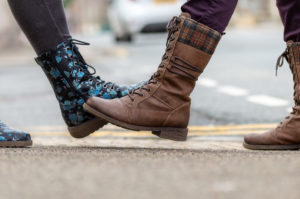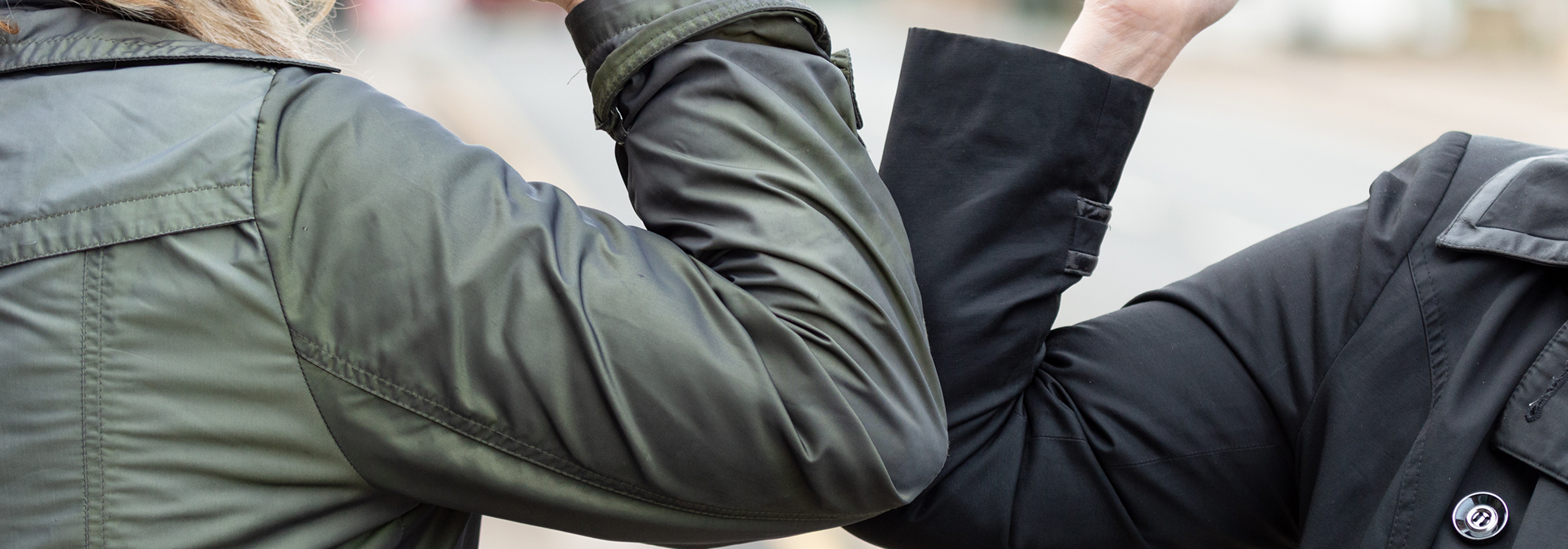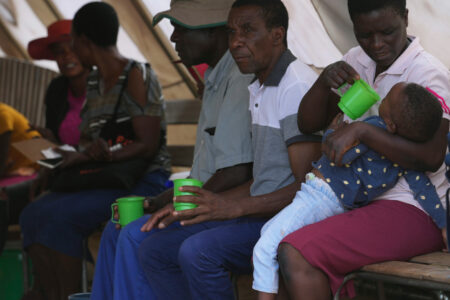
To contain the rapid spread of COVID-19, we’ve all been asked to practice social distancing. Its wider social benefits are clear: reduced disease transmission, less stress on the health care system, and fewer deaths. So why are some people resistant to doing it? The personal benefits of social distancing are uncertain, whereas the burden on individuals is high, from disrupted family routines to loneliness. To outweigh these personal costs without jeopardizing civil liberties, social distancing must become a social norm.
How can we achieve this?
Our study of the 2009 H1N1 influenza outbreak offers lessons about the role of consistent and continuous public messaging in helping people choose behaviours that promote the social good over a personal cost.
How can social norms help?
A social norm is an informal rule of behaviour that governs interactions when they can lead to more than one outcome. Social norms prescribe actions that produce socially beneficial outcomes, even when those actions have costs for individuals such as monetary expenses, psychological costs or extra effort. In the case of social distancing, some behaviours are less costly than others. Greeting each other in a way other than shaking hands is a low-cost change. Other changes, like self-isolation or homeschooling, are much costlier. When a social norm is established, these personal costs will be offset by the psychological benefits of acting properly and experiencing social acceptance.
Social norms reflect commonly shared beliefs about appropriate actions, with the expectation that others will follow them, too. These appropriate actions then become prominent among all possible behaviours. They stand out.
Take, for example, greetings. Shaking hands is normally a prominent action that is used to greet others in many cultures. By extending your arm, you expect the other person to do the same. If this belief is shared, the two of you shake hands. Otherwise, no handshaking occurs, as illustrated in early March when Germany’s Interior Minister refused to shake Chancellor Angela Merkel’s hand. Since the COVID-19 pandemic started, alternative greetings have been quick to appear, such as the elbow bump, the Namaste hand prayer, the Vulcan salute and the “Wuhan shake.” But none of these has become prominent yet.

For preventive measures to become prominent and gain footing as a new norm, common knowledge needs to be provided by health authorities to instill common beliefs. Will public messages be efficient enough and sufficient to achieve consensus around new behaviours? No one knows.
However, there are lessons to be learned from the 2009 H1N1 influenza outbreak, which emerged in the spring of 2009, and has some similarities to and important differences from the coronavirus outbreak.
The 2009 H1N1 influenza was less contagious and less fatal than COVID-19, and its social and economic impacts were not as severe as that those we are likely facing today. Consequently, we’ll need far greater behavioural changes now, because of the closure of schools, workplaces, and international borders. In 2009, authorities recommended self-isolation only to people with flu-like symptoms and asked them to seek medical care only if their symptoms worsened. This was the extent of efforts needed to stop virus transmission and to avoid overcrowding emergency rooms. By late November 2009 a targeted H1N1 influenza vaccine had become widely available, adding one more thing to the list of prevention measures.
However, the main public messages about prevention in 2009 overlapped with those we hear today: wash your hands, cough or sneeze into your sleeve, and stay home if you have symptoms. Tailored to create common beliefs, these messages were highly visible in public spaces, in the media and online.
To understand how Canadians responded to these messages, we conducted an economic experiment with 120 volunteers in Montreal, measuring changes in their common beliefs about prominent health actions before and after the 2009 H1N1 outbreak.
Three findings stand out:
- Common beliefs about prominent actions for those who were sick shifted from being individualistic to favouring public benefit. Before the outbreak, seeking medical help was the prominent thing to do; after the outbreak, avoiding contact with other people gained prominence.
- Common beliefs about prominent preventive measures moved from a focus on hygiene to one on getting vaccinated, despite widely circulated misinformation about the vaccine’s safety and the availability of easier actions like hand washing.
- Common beliefs about the vaccine’s side effects changed as well. Before the outbreak, participants believed nobody knew what the correct side effects were. Afterward, most of them believed the correct side effects were widely known.
Our findings imply that exposure to common information, including messages from public health authorities, was responsible for these changes in common beliefs. The findings were independent of participants’ characteristics, medical knowledge, and personal experience with the illness or the vaccine.
What does this mean for the COVID-19 pandemic?
First, public messaging that strongly emphasizes the health of others is even more important today than it was for 2009 H1N1 influenza, because COVID-19 can be transmitted by nearly asymptomatic people who may be unwilling to self-isolate for weeks. In 2009, the focus of official messages on the public health benefits rather than personal needs appeared to work.
However, the authorities and the media should be aware of possible unintended effects of their messages on peoples’ behaviour. First, recent reports about older peoples’ vulnerability to COVID-19 might have had the adverse effect of lowering the perceived risk among the younger population and muting the prominence of social distancing, an oversight that is being corrected only now. In 2009, young adults were more vulnerable to the H1N1 influenza than were older individuals. Hence, it is possible our participants, whose median age was 27, paid more attention to public messages to protect themselves and their peers.
Second, once a vaccine is available, it might become a prominent option recognized by most people, either because it is less costly to get a shot than make behavioural changes, or because vaccines are seen as more effective at preventing contagious diseases. Without a vaccine, more efforts are needed to emphasize better hygiene and social distancing as vital preventive measures, which might also become helpful in the long run if they help contain future pandemics of new viruses.
Finally, there are three relevant takeaways about the role of public messages in the fight against the misinformation about COVID-19. First, misinformation about the 2009 H1N1 vaccine, often self-contradicting, failed to create false common beliefs about the vaccine’s side effects. Second, this misinformation might have inadvertently attracted attention to the H1N1 vaccine as a prominent prevention action. Third, high prominence of correct responses about side effects post-outbreak clearly indicates the effectiveness of public messages in correcting misinformation.
There are also new factors at play in 2020
The presence of social media in our lives is much stronger today than it was in 2009. What role will mass communication and message personalization play in establishing/reinforcing norms, spreading (mis)information, and helping people stay connected to cope with isolation? Can authorities effectively use social media to engage youth and gain access to a wider audience in order to “spread the info, not the virus”?
Media and opinion polarization have increased since 2009. Will common beliefs vary across population subgroups, depending on where they get their news or which political party they identify with?
Whatever happens, we must change our behaviour in this critical time if we hope to minimize the social and economic impact of the pandemic without introducing draconian measures. More interconnected now than ever, we must use all available tools to disseminate scientific and medical expertise, communicate key messages prominently and widely, and adopt new social norms to collectively tackle this challenge facing all humanity. Lessons learned during this outbreak might help societies better coordinate and cooperate when dealing with future pandemics.
This article is based on Coordination, Common Knowledge and an H1N1 Outbreak, by Jim Engle-Warnick, Sonia Laszlo, Natalia Mishagina, and Erin Strumpf, CIRANO Scientific Series 2013s.
This article is part of the The Coronavirus Pandemic: Canada’s Response special feature.
Photo: The elbow bump is one of the new alternatives to the handshake. Shutterstock, by Linda Bestwick.













